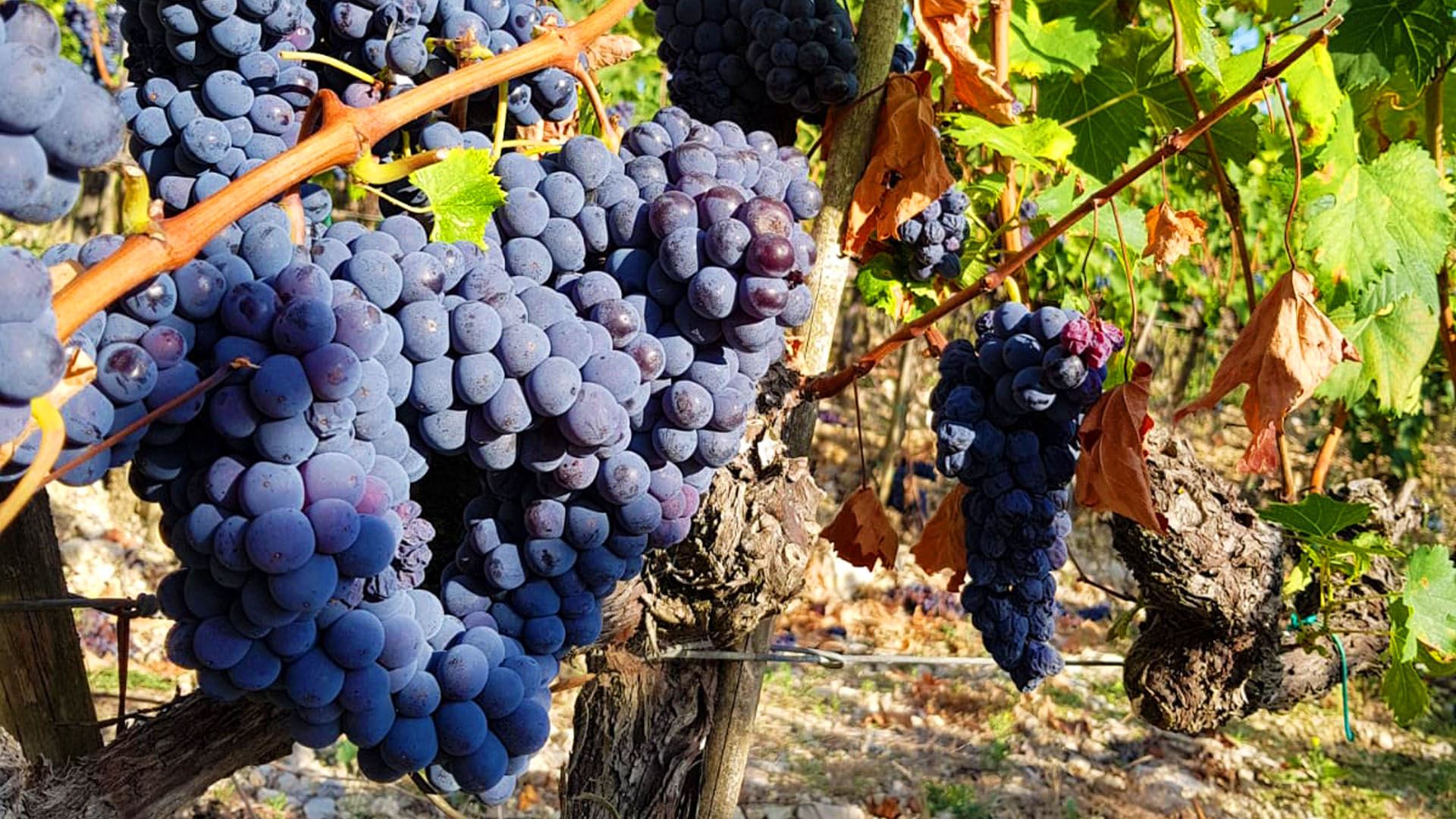Chianti wine trail: Florence to Siena
The Chiantigiana (or simply the SR 222), the road connecting Florence to Siena, is one of the most beautiful driving routes in Italy, passing acre upon acre of vineyards producing the world-famous Chianti Classico DOCG.
Chianti has been one of Italy’s most important wine-producing regions for more than three centuries. It was here that the family of the Grand Duke of Tuscany began cultivating grapes during the 18th and 19th centuries in the region that would become modern Chianti.
When is the best time to follow the Chianti wine route?
The best time of year to visit Tuscany is during the September harvest or just before to see the vines bowing under the weight of the ripening Sangiovese grapes – the variety from which Chianti Classico is made.
Another good reason to visit in September is to join in one of the local festivals that celebrate the harvest, such as the Vino al Vino, held on the third week in September, in the small town of Panzano, where many local wines can be sampled by the glass.
The Chianti wine route
You could be forgiven for thinking the Chianti wine trail was a straight path or circular route; instead, you will drive a series of zigzags. Don’t despair though, your efforts will be thoroughly rewarded with enchanting Tuscan countryside views, charming medieval towns and, of course, delicious wines for sampling.
For a truly inspiring tour of the Chiantigiana, make time to visit at least some of the ancient towns along the way and call by the vineyards. Most wineries are open to the public but double-check before you visit to avoid disappointment.
Here are some of our favourites:
Greve in Chianti
Greve, one of Chianti’s main market towns, oozes history, from its Franciscan monastery in the old quarter to the market on the triangular main piazza, where traders have been selling their wares down the centuries.
Wineries to visit:
Castello di Verrazzano
Visit the vineyards and cellars of this ancient castle, dating from the 12th century, to taste classic wines, olive oils and balsamic vinegar. There are lovely late-Renaissance gardens to stroll around, too.
Tel: +39 055 854243
Web: www.verrazzano.com
Vignamaggio
The winery at the villa of Vignamaggio, which dates back to the 14th century, produces Chianti Classico, Chianti Classico Riserva IGT and Vinsanto del Chianti Classico DOC. Pre-book a guided tour of the gardens and cellars, including a wine tasting and lunch. If you’re tight for time, just pop in the shop to sample the wine and olive oil.
Tel: +39 055 854661
Web: www.vignamaggio.com
Panzano in Chianti
This small town between Castellina and Greve, first settled by the Etruscans, is overlooked by an 11th-century castle, a hike to which, through the cobbled streets, is well worth the effort. The town’s piazza is charming – a place to while away time watching the elderly locals playing cards while sipping a Prosecco or enjoying home-made gelato.
Wineries to visit:
Le Fonti
Le Fonti, a charming, boutique, family-run winery set at the foot of Panzano, is open for cellar tours and tastings of its superb IGT and Chianti Classico DOCG.
Tel: +39 055 852194
Web: www.fattorialefonti.it
Fattoria Montagliari
A small family-run farm, Fattoria Montagliari has been producing wine using traditional methods since 1720. The Migliorini family, who bought Fattoria Montagliari in 1999, are the latest to cultivate its soil, producing Chianti Classico DOCG, Chianti Classico Riserva, Brunesco di San Lorenzo IGT, grappa, brandy, extra-virgin olive oil and aged Trebbiano balsamic vinegar. There is also a fantastic restaurant here, serving up authentic Tuscan cooking and beautiful views of the Greve valley.
Tel: +39 055 85 20 14
Web: www.montagliari.it
Castellina in Chianti
Castellina in Chianti is a sight to behold, sitting on its high ridge. It is thought to have been built on the ruins of a Roman settlement. But it’s the 14th-century fortress and the 16th-century church of San Salvatore that today’s visitors come to admire.
Wineries to Visit:
Gagliole
What’s your tipple, Chianti Classico or grappa? Both (and more) are on the tasting menu at Gagliole, a vineyard dating back to the ninth century.
Tel: +39 0577 740 369
Web: www.gagliole.com
Villa Trasqua
This vineyard offers guided tours of its cellars, including tastings of Chianti DOC and IGT wines.
Tel: +39 0577 74 30 75
Web: www.villatrasqua.it
For more information and the best things to do in Castellina in Chianti, visit our Travel Guide.
Radda in Chianti
The ancient market town of Radda has been key to Chianti’s fortunes and remains a community immersed in the wine industry. Stroll the cobbled streets to trace this town’s history down the centuries, in the old town walls, the Palazzo del Podesta, and the Propositura di San Niccolo.
Wineries to Visit:
Volpaia
Find out about the long tradition of winemaking in this restored hamlet, where wine tastings will take you from grape to bottle.
Web: www.volpaia.com
Castello di Albola
High in the Chianti hills, an amphitheatre of vineyards provides the grapes for some great wines that you can try if you drop by.
Web: www.albola.it
For more information and the best things to do in Radda in Chianti, visit our Travel Guide.
Gaiole in Chianti
Call by charming Gaiole and you’ll soon realise why the American magazine Forbes put this charming town at the top of its list of Europe’s Most Idyllic Places to Live. Yet, Gaiole is more than a pretty face. It was once a powerful community, one of the centres of the Chianti League.
Wineries to visit:
Castello di Brolio
The biggest winery in Chianti Classico, Barone Ricasoli has been linked to wine since the 12th century, when Brolio Castle passed into the hands of the family of this name. Learn about and appreciate the fruits of these vines on a selection of tours, including one held at sunset. You can take a closer look at parts of the Neo-Gothic castle, too.
Tel: +39 0577 730220
Web: www.ricasoli.it
Casanuova di Ama
Casanuova di Ama was bought by the Bencini family in 1967. For the following 20 years, they restored the estate’s buildings and planted new vineyards before finally putting their first wine on the market in 1984, sold in the iconic traditional fiasco, the bottle with a rotund bottom wrapped in straw.
Tel: +39 0577 746119
Web: www.agrariacasanuovadiama.it
For more information and the best things to do in Radda in Chianti, visit our Travel Guide.
Chianti Classico Wines and Produce
As mentioned above, Vino Chianti Classico DOCG is undoubtedly the most famous product you can hope to find in the Chianti region. Produced following a rigid regulation, this wine combines Sangiovese grape with other “bacca rossa” or red grapes such as Colorino or Canaiolo. You can instantly recognise a Chianti Classico by its “Gallo Nero” or Black Rooster emblem, proudly used since 1924.
This isn’t the only local delight you will find in Chianti though. Whilst you’re there, be sure to sample the exceptional Extra Virgin Olive Oil, Olio Extra Vergine di Oliva DOP Chianti Classico. Green/gold in colour, this speciality is derived from olives found in Frantoio, Correggiola, Moraiolo and Leccino.
Lesser-known local delicacies include:
Vinsanto del Chianti Classico DOC, a liquor aged for up to 5 years in small wooden barrels called “caratelli” and produced from white Malvasia and Trebbiano grapes;
“Carne di Chianina”;
hand-rolled pasta;
and cold cuts of meat, including pork, wild boar and the “cinta senese” pig.
Places to Stay near the Chianti Wine Trail
To truly make the most of the Chianti wine trail and immerse yourself amongst the vineyards and wineries, why not stay at a local private villa? We are lucky enough to offer a collection of beautiful villas right in the heart of the Chianti area ranging from one-bedroom romantic retreats to extravagant properties large enough to accommodate the entire family.
Explore our collection of Chianti villas here. Or contact our villa specialist team, who are available to assist you. Click here to get in touch.














